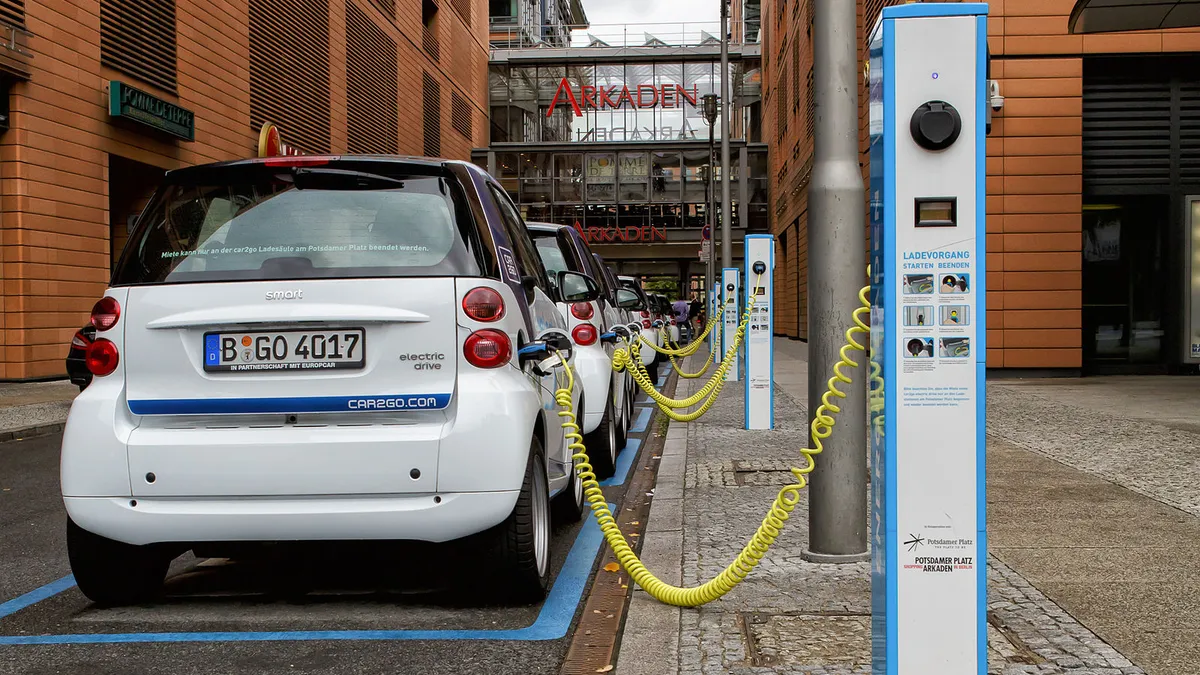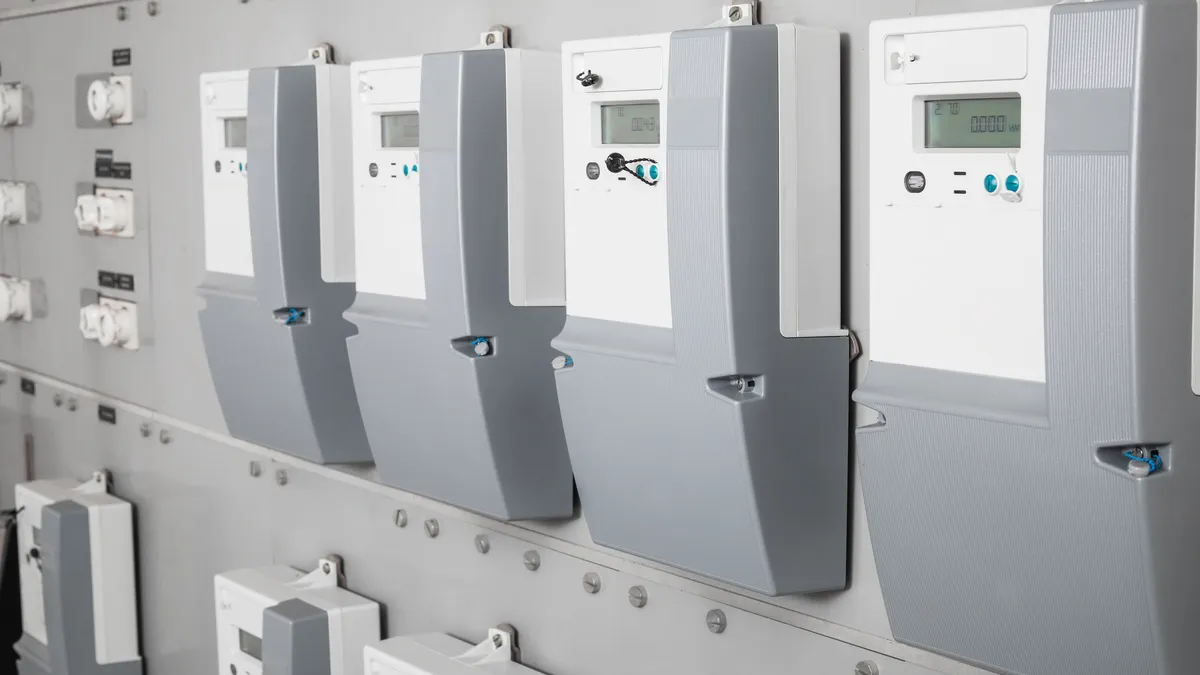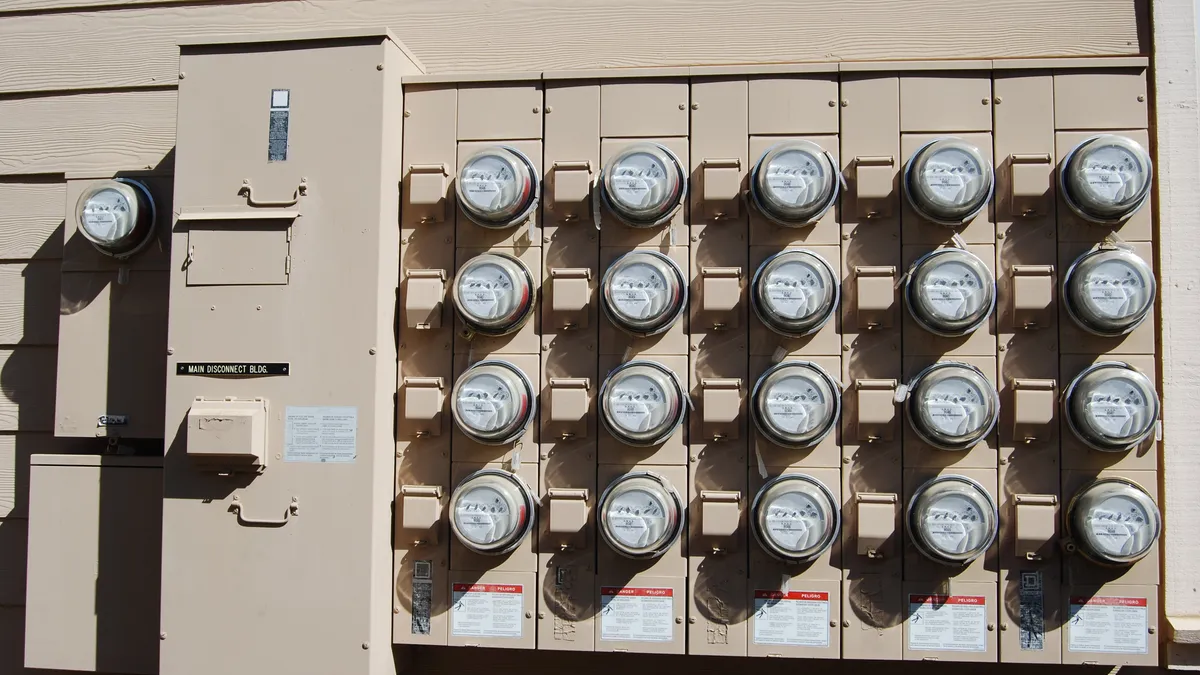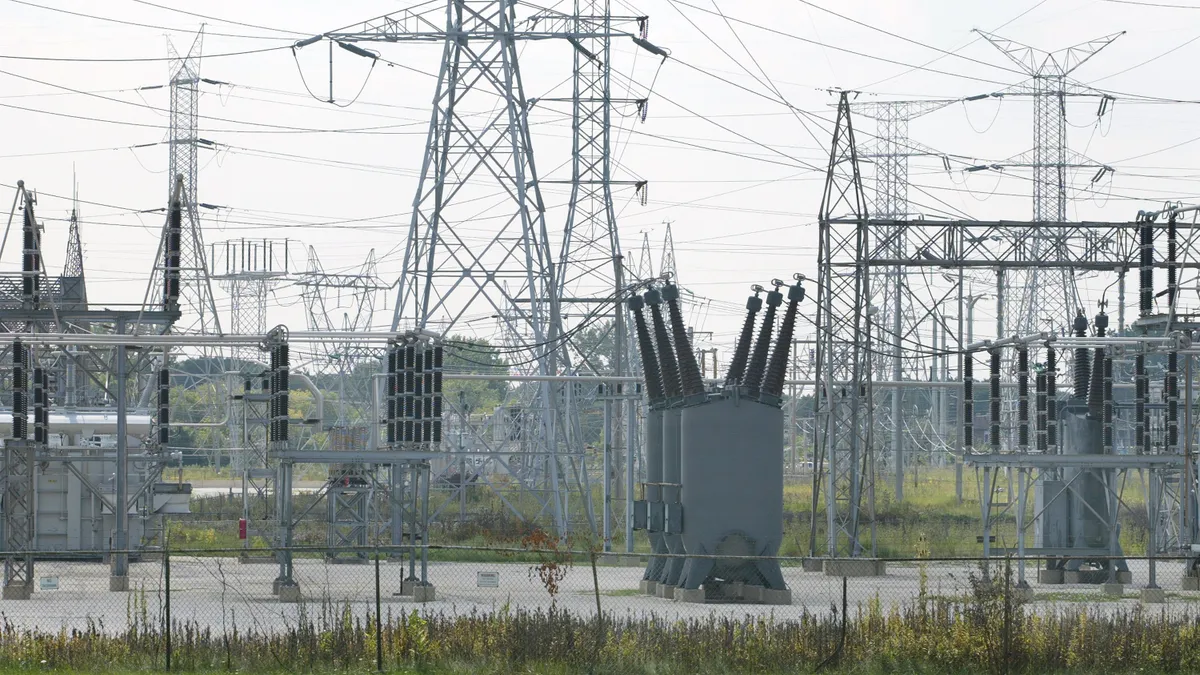The California investor-owned utilities (IOUs) want to spend over a billion dollars to drive electric vehicle charging ahead — and they’re not just talking cars. New plans filed with state regulators aim to put plugs on just about everything with wheels.
Southern California Edison (SCE) would spend $19.45 million on six “priority review” pilots and $553.8 million on a five-year charging infrastructure buildout. San Diego Gas and Electric (SDG&E) wants $18.19 million for six priority review pilots and $225.9 million for residential charging. And Pacific Gas and Electric (PG&E) has proposed $20 million for priority reviews and $233.2 million for two five-year charger buildouts.
In all, it comes to $1.07 billion for a wide-ranging list of programs from heavy-duty transport electrification to incentives for Uber and Lyft drivers.
“The three proposals from the IOUs add up to a game changer,” said Christine Kehoe, executive director of the Plug-In Electric Vehicle (PEV) Collaborative, an industry advocacy group. “[They] will deliver cleaner air and more of the economic and public health benefits and energy independence that have come with the 561,000 EVs now on U.S. roads.”
These proposals follow a first round of ambitious investments from California’s IOUs on charging infrastructure for light-duty passenger vehicles — small consumer EVs like the Chevy Volt. Three IOU programs totaling $197 million were approved by the California Public Utilities Commission (CPUC) over the last year to support Gov. Jerry Brown’s goal to have 1.5 million zero emission vehicles (ZEVs) on the state’s roads by 2025.
The first programs were more important for drivers of the light duty EVs, said Katherine Stainken, policy director at trade group Plug-In America (PIA), “but the new initiatives are also groundbreaking.”
The new programs — filed in the state’s Zero Emission Vehicle proceeding — cover a lot of ground. SDG&E wants to build 90,000 residential chargers, pilot charging infrastructure builds for medium and heavy duty vehicles (MHDVs) like delivery trucks and forklifts, and provide incentives for auto dealers and ride-hailing services like Uber and Lyft.
SCE’s spend would go largely to charging infrastructure for MHDVs. It would also fund programs to increase EV awareness. And one small pilot would build direct current fast chargers (DCFCs), which can fully charge a car in 30 minutes or less. DCFCs were excluded by the commission from the first round of utility programs.
PG&E’s plan is also largely directed at MHDVs, but a big chunk is aimed at a significant buildout of DCFCs. PG&E fought hard to get commission approval for them in the first round, but more than doubled its requested number in this filing, hoping a strategic shift in the deployment strategy will win CPUC approval.
PG&E estimates its service territory, which includes 40% of California’s population, will serve about 40% of the vehicles. SDG&E expects to serve about 10%, leaving leaves about half of the 1.5 million vehicles to SCE and territories served by the state’s public and municipal utilities, which are not required to file plans with the CPUC.
As with the first round of charging plans, approval is not assured. The Utility Reform Network (TURN), one of California’s strongest ratepayer advocacy groups, sees the spending as huge “subsidies,” Spokesperson Mindy Spatt told Utility Dive. “And the benefits are largely speculative.”
TURN is unconvinced the proposals would directly benefit all customers, “especially residents of vulnerable, low-income communities struggling to afford basic electricity, housing and transportation,” Spatt said.
In the coming months, the commission must decide if it wants to support EV growth at ratepayer expense. It will consider whether the EV industry needs DCFCs, whether it is time to build MHDV infrastructure, and whether utilities should be in the charger business. In doing so, it also must tackle the deeper question of whether utility spending on transportation electrification benefits only the EV business and its customers, or if there are quantifiable payoffs for everyone who uses the California grid.
What they want to build – PG&E
To meet the transportation electrification goals spelled out in California’s Senate Bill 350, each IOU included one-year priority review pilots in their larger proposals. A September 2016 CPUC ruling limits their priority review projects to $20 million in total value and allows each pilot no more than $4 million and one year of development.
In one of PG&E’s five priority review projects, the utility would partner with a customer to convert a currently operating a fleet of fossil-fueled MHDVs like transit buses or short-haul delivery vehicles to EVs. The $3.35 million investment would build make-readies at the customer’s site. A make-ready is all the infrastructure required for installation of a customer-purchased charger.
A second $3.35 million priority review project would similarly demonstrate the benefits of electrification in idle-reduction at a truck stop or for a fleet of refrigeration units.
In a school bus and renewables integration pilot, PG&E would invest $3.35 million to deploy electric school buses. It would also test incentives and rate designs to encourage midday charging to take advantage of solar over-generation, according to PG&E Spokesperson Ari Vanrenen.
A $1.75 million pilot would develop an online resource to simplify information gathering for residential customers. The tool would provide charging equipment information and a database of certified electrical contractors and installers.
The other $8.2 million of PG&E's $20 million would fund transportation electrification projects selected through open competitive procurements. The procurements would support private provider innovation, Vanrenen said.
Outside of the priority review pilots, PG&E’s focus would be largely on large vehicles and fast charging.
The utility’s proposed $210 million Fleet Ready standard review program would build an estimated 700 make-readies for MHDVs over five years, Vanrenen said. They would serve trucks, buses, forklifts, tractors, and other commercial vehicles.
Fleet Ready would deliver “the same level of EV infrastructure support for non-light-duty vehicles as the commission has approved for light-duty vehicles,” according to the utility’s filing.
Finally, PG&E $20.1 million Fast Charge program would build make-readies at 52 public sites for the installation of up to 234 DC fast chargers. The chargers would be purchased and installed by customers and “then they would reach out to us to build the make-ready,” Vanrenen said.
This is a key departure from the first round DCFC plan denied by the CPUC. For that plan, PG&E proposed owning and operating the charger. But “we embraced first round feedback and shifted away from utility ownership,” Vanrenen said.
The proposal’s total $253 million cost would cause “a maximum average residential rate increase of no more than about $0.25 per month, or about a 0.6% average monthly rate increase for residential customers,” she added.
“It is a not very large rate increase, considering how important transportation electrification is to achieving the state’s 40% greenhouse gas (GHG) reduction by 2030 target,” Vanrenen said. “It will become even more effective as PG&E and the other utilities move toward their 33% by 2020 and 50% by 2030 renewables mandates.”
What they want to build – SDG&E
The first of SDG&E’S six priority pilots is a $2.84 million plan to partner with the San Diego’s airport. It would fund up to 45 chargers and infrastructure for as many as 90 new electric ground support vehicles.
A second, $2.4 million investment would fund hardware for charging 17 freight handling vehicles at San Diego’s port.
“Eventually, we want total electrification,” SDG&E Chief Environmental Officer Mike Schneider said.
SDG&E would also partner with a delivery vehicle fleet owner and invest up to $3.69 million in a charger buildout at its six sites. The fleet owner would supply 90 electric vehicles. SDG&E would use price signals in its cutting-edge rate designs to encourage charging at times when demand is low and discourage it when demand peaks.
“This will help prepare for where the economy is going, away from brick and mortar and toward delivery vehicles,” Schneider said.
A separate $4 million investment would install two DCFCs and 20 level 2 chargers at each of four park-and-ride locations in or near disadvantaged communities. Level 2 chargers can charge a light duty EV in four to six hours. The utility would similarly use rate designs to drive light-duty charging at times most beneficial to its grid.
A $3.47 million investment would fund five DCFCs along routes frequented by taxis, shuttle services, and ride-share companies like Uber and Lyft.
“This is where we see transportation going,” Schneider said.
That pilot would provide incentives to encourage drivers to lease or purchase EVs and also use the rate design to encourage charging at preferred times. One of the chargers would be powered by a solar-plus-battery system.
A sixth, $1.79 million investment would go to an education and incentives program for San Diego car dealers. “It would fund 1,500 bonuses of $500 for each EV sale, $250 to the dealership and $250 to the salesperson,” Schneider said. “It would also fund a salesperson training and certification led by PIA.”
SDG&E’s $225.92 million, five-year standard review proposal would extend its first-round public charger installation program by funding 90,000 level 2 chargers for single-family homes. The residential customers would commit to the SDG&E rate design.
Instead of level 1 chargers that require 10 hours to 14 hours of charging, “residential EV owners will be able to take advantage of SDG&E’s $0.07/kWh ‘super off-peak’ midnight to 6 a.m. rate, which is well below the cost of gasoline,” Schneider said.
The rate design also offers low rates during midday hours to encourage charging during periods of solar over-generation, he added.
The objective is to get residential customers to charge at the daytime $0.13/kWh rate or the super off-peak rate and avoid charging during the system’s highest 250 hours of load, when the rate can be as high as $0.70/kWh, Schneider said.
“San Diego’s total system load factor is about 47% and with more charging during the off-peak periods, we spread that load and get more use of the system.”
SDG&E’s chargers will be programmable so EV owners can use them to effectively manage charging.
“We are starting to see EV drivers responding to price signals,” Schneider said. “Once you convert charging to a dollar value, if it is simple and easy, people will adapt.”
The SDG&E proposal would increase the average residential customer’s current bill by $0.71 per month, though EV charging will increase usage, Schneider said. “It is a 0.6% monthly rate increase on an average bill of $123 per month.”
What they want to build – SCE
Two SCE priority review pilots would invest $3.49 million to build make-readies for nine cranes and a fleet of yard tractors at the Port of Long Beach. A $3.98 million pilot would fund the buildout of make-readies to serve electric commuter buses in the utility’s service territory. Both would also include rebates for charger and installation costs.
SCE’s $4 million ride-share pilot would offer rewards to ride-share or taxi drivers who use EVs and meet minimum activity level.
The other two SCE priority review pilots target residential customers and light duty EVs.
A $4 million program would provide rebates to customers in single-family homes or multi-unit dwellings who install chargers. To obtain the rebates, customers would have to opt in to SCE time-of-use (TOU) rates. The rebates would defray the costs of charger installation.
A $3.98 million pilot would deploy five DCFC clusters in urban areas, each with up to ten chargers. SCE would install, own, and maintain the infrastructure at customer-owned publicly accessible sites like parking lots. Customers would choose chargers from an SCE-qualified DCFC provider list and receive a rebate covering their purchase and installation costs in return for offering public access during the pilot.
The SCE $553.82 million standard review proposal would build make-readies for MHDVs, provide 100% rebates for charger purchases, and offer a new rate design for commercial customers. The infrastructure would serve trucks, buses, industrial equipment, and cargo-handling equipment. Customers would procure, install, and maintain the chargers.
The program targets freight traffic in the South Coast and San Joaquin air basins, said SCE Air and Climate Policy Manager Laura Renger. MHDV emissions are the primary cause of these regions being the only ones in the U.S. in “severe non-attainment for ozone” and they seriously impact adjacent disadvantaged communities, she said.
The new SCE rate option would eliminate its demand charge for five years and offer a TOU rate to encourage off-peak daytime and overnight charging. After five years, the demand charge would be gradually restored. But the rate at the end of the five-year phase-in would be lower than with today’s demand charges, according to the filing.
“The proposed EV rates will provide a greater benefit to customers with daytime charging profiles, should they shift their load to match the super-off-peak period,” it adds. “As demand charges are phased in after the initial five years, load management will become more important as a tool to mitigate the effect of demand charges.”
The average overall SCE customer rate would go from $0.158/kWh to $0.159/kWh, a 0.5% increase, according to the filing.
Industry and consumer groups react
EVgo, a leading owner and operator of car chargers in California, approves of the focus on MHDVs, Vice President Terry O’Day told Utility Dive. “It is an important sector for the EV industry and a sector that has been difficult to get infrastructure in place for.”
EVgo likes SCE’s new rate option, O’Day added. “The question is how to get more infrastructure built in advance of the vehicles and demand charges prevent that. In the SCE plan, the choice of rates is left to the customer and EVgo is the customer, so we would be able to choose the rate option that is most beneficial at each location.
Plug-in America’s Stainken agreed. The SCE rate proposals “will not require a lot of budget but could produce good results.”
PIA also endorsed the SDG&E rate designs for residential customers and both the SCE and SDG&E incentives for taxi, shuttle, and ride-share drivers.
“Every time a customer rides in an EV, they are educated about the dependability and practicality of EVs,” Stainken said. “PG&E may include that kind of a program in their innovation pilot.”
PIA will work with SDG&E on its auto dealership education program, she added. “Surveys have found that even buyers interested in EVs may be discouraged by dealers and salespeople who don’t know about EVs.”
Overall, PIA would like to see more consumer education in the proposals. It would also like the SCE and PG&E rebates to cover more of the cost and be simpler to take advantage of, Stainken said. And while SDG&E’s emphasis on level 2 chargers is good, “it should not overlook the fact that level 1 charging works for a lot of consumers.”
TURN’s Spatt, however, questioned whether the utility programs will benefit all ratepayers, or just the subset of them that drive EVs.
The CPUC should impose “measurable standards” and demand “demonstrable results” because the money from these programs “will come right out of customers' pockets,” Spatt said. “The worst case scenario would be that customers are billed millions for charging stations that end up unused and don't provide benefits commensurate with their costs.”
How California regulators will view those questions remains to be seen. While utilities were able to prove consumer benefits in their first round of EV proposals to the commission, whether the same logic will extend to more indirect programs — such as SDG&E's subsidies for EV sales — is still in question.
Kehoe of the the PEV Collaborative said the IOU proposals will take transportation electrification “to the next level” by increasing charger “presence” and siting more charging where it will add “flexibility and driver convenience.”
The differences in the utility proposals may yield valuable lessons as well, she added. As proposed, SCE and PG&E plan to build make-readies for charger infrastructure, while SDG&E is proposing to install the charger itself as well.
“This is an opportunity to see how the market develops," Kehoe said. "The convenience of fast charging is likely to become very important."
The fast charging question
The commission denied repeated efforts by PG&E to include DC fast chargers in its first round proposal, yet the utility’s new fast charger plan is twice as big and expensive, and the other IOUs now also want DCFC funding.
More DCFCs will “open EV ownership to those who haven’t had it before,” Vanrenen said. At present, 80% of charging happens overnight at drivers’ homes, “but many drivers prefer fast charging because it is closer to the convenience of a gas station.”
Newer EVs with 200-plus mile ranges make DCFCs even more important despite their high upfront cost, she added. “As drivers venture farther away from home, they need the reassurance that they can charge quickly to get home.”
A study of PG&E’s service territory by the University of California at Davis found a need for 1038 DCFCs in 2025. Forecasted installations fall 289 short. The utility’s conclusion is that it must push for more to meet its responsibility to its customers, Vanrenen said.
The EV advocacy groups and private providers agree fast charging is critical.
“To sell cars, it is important customers have fast charging because it approximates the gas station experience,” EVgo’s O’Day said.
Much of the addressable EV market lives in multi-unit dwellings and only about half have a parking space, he said. “With more public fast charging, they could stay charged, but if that much of the potential EV market cannot charge conveniently, there may not be a market.”
PIA’s Stainken agreed. “Consumers need more fast charging now. That is probably why PG&E is pushing again for big numbers with a new approach.”
Tom Ashley, government relations director at charging company Greenlots, concurred.
“There is a real need for fast charging and there will be an even greater need for it by the time this regulatory process runs its course,” he said.
Greenlots is concerned that leaving ownership and maintenance of chargers to customers will impede progress, Ashley said, and it prefers the SDG&E approach of installing both make-readies and chargers. But PG&E’s switch to the make ready-only model makes sense because “it appears to be an attempt to win commission approval.”
A debate about how utilities will participate in the EV charger market is ahead but, for now, “one of the biggest single questions the commission faces is what to do about fast charging,” Ashley said. “Greenlots’ hope is that it will become more educated around fast charging and recognize the need for it to scale in California.”




















